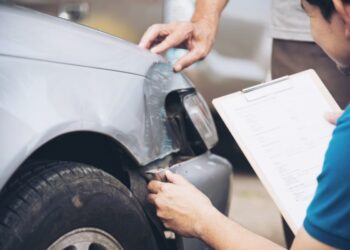Riding a motorcycle brings excellent freedom and excitement. But, it also needs much caution, especially in harsh weather. Riding on motorcycle roads in bad weather is brutal. But, every rider may face it. Being prepared can distinguish between a safe ride and a dangerous situation. This is true in heavy rain, strong wind, fog, or other bad weather.
This post will explore key tips for motorcyclists on handling dangerous weather on motorcycle roads and accidents. These tips will ensure that avoidable risks never spoil the joy of riding.
Understanding Weather Risks For Motorcyclists
Learning to ride a motorcycle isn’t just about mastering the mechanics. It’s also about developing a keen awareness and adaptability to the environment.
This includes understanding how different weather conditions affect the riding experience and how to adjust one’s riding strategy accordingly. Here are some common dangers associated with different types of adverse weather:
It reduces visibility and road grip, making it harder to stop. It also increases the risk of hydroplaning. This happens when a layer of water stops tires from touching the road.
Wind
Strong winds can push a motorcycle off course, especially on highways and open roads. They can also cause debris onto the road, creating hazards for riders.
Fog
Severely reduces visibility, both for the motorcyclist and other drivers. It also makes it harder to judge distances and react.
Extreme Temperatures
High heat can cause dehydration and fatigue. Cold can cause numbness in the hands and feet. This makes controlling the motorcycle harder.
Ice and Snow
They are hazardous to motorcycles, as they can lead to slips and falls. Ice and snow also reduce traction, making it harder to brake or turn.
Tips For Handling Tough Weather Conditions
Now we understand the risks. Let’s look at precautions and strategies to handle tough weather on a motorcycle on the street:
Before You Ride
Always check the weather forecast before you plan your trip. Today’s forecasts are accurate. You can use them to avoid bad weather or prepare.
Ensure your motorcycle is in good working order, paying particular attention to tires, brakes, and lights. Your tires should have adequate tread to displace water in wet and slippery conditions.
On the Road
Reducing your speed is the simplest yet most effective strategy for maintaining control of your motorcycle in bad weather. It allows you more time to react to unexpected hazards.
Stopping distances can increase on wet or slippery roads. Increasing the distance between you and the vehicle in front gives you more time to react. Always keep your headlights on to increase your visibility to other road users.
Be smooth with your throttle, brakes, and steering to avoid losing control, especially on slippery surfaces. Wear colored, reflective gear to make yourself more visible to other drivers, particularly in fog or heavy rain.
Advanced Strategies
If you’re traveling in windy conditions, expect gusts when passing large vehicles, emerging from tunnels, or crossing bridges. Lean into the wind, but be ready to correct as the wind gust passes.
If you feel your motorcycle hydroplane (skim over the water’s surface), resist the urge to brake or turn. Instead, ease off the throttle and steady the handlebars until you regain control.
After Your Ride
Dry your gear after riding in wet conditions to avoid damage and ensure it is ready for your next ride. Hazardous weather can be harsh on your bike. After riding in adverse conditions, check your motorcycle for any signs of wear or damage, focusing on the brakes, tires, and electrical system.
Maintaining Focus and Awareness
Riding in poor weather requires higher concentration levels. Avoid distractions and stay focused on the road and your surroundings.
Take regular breaks during your ride to prevent fatigue, which is more likely to occur in stressful conditions like bad weather. This will help you stay alert and reduce the risk of accidents.
Watch for road signs warning of upcoming adverse conditions and adjust your riding accordingly. Be particularly wary of areas prone to flooding or ice.
Whenever possible, plan your route to avoid areas known for poor drainage, high winds, or other weather-related hazards. Use real-time weather updates to make informed decisions while on the road.
Equip Yourself With the Proper Gear
Being correctly dressed is crucial for motorcycle riding in adverse weather conditions. Here’s what every motorcyclist should consider.
Invest in high-quality jackets, pants, and gloves. They keep you dry and help maintain body temperature and comfort during your ride. A good helmet with an anti-fog visor or a pin lock system can drastically improve visibility in rainy or foggy conditions.
In addition to your helmet’s visor, wearing protective eyewear can offer another layer of protection against the elements and improve visibility. In cold weather conditions, heated jackets, gloves, and even socks can significantly improve comfort and control by keeping the body warm. A cover can protect your motorcycle from the elements when you’re not riding.
Utilizing Technology for Safety
Advancements in technology have introduced new tools that can enhance motorcycle safety in bad weather. Keep up-to-date with real-time weather information on your route using smartphone weather apps. This can help you expect conditions before you encounter them.
Modern motorcycles equipped with MSC systems can offer a layer of safety by adjusting the bike’s power delivery and braking force during cornering, particularly on slippery surfaces.
Use GPS technology to plan your route and find real-time traffic updates. This can be especially useful in avoiding areas with poor weather conditions.
The Role Of A Lawyer
Despite all precautions, accidents still occur, and the aftermath can be challenging to navigate, especially in bad weather conditions. This is where the expertise of a Motorcycle Accident Lawyer becomes invaluable. These specialized attorneys understand the complexities involved in motorcycle accidents, including the nuances of weather-related crashes.
They can provide crucial support in navigating the legal landscape, from dealing with insurance claims to ensuring you receive adequate compensation for injuries or damages sustained. Riding with caution and being prepared can reduce risks, but in the event of an accident, knowing that there are professionals who can help manage the legal implications offers an extra layer of security for every rider.
Always Be Prepared On Motorcycle Roads And Accidents
Navigating dangerous weather conditions on motorcycle roads and accidents demands respect, preparation, and a defensive riding approach. By following these tips, you can enjoy the ride while minimizing the risks of bad weather.
Remember, the best motorcyclists never stop learning and adapting to new challenges. Ride safely!
For more helpful tips, check out the rest of our site today!










